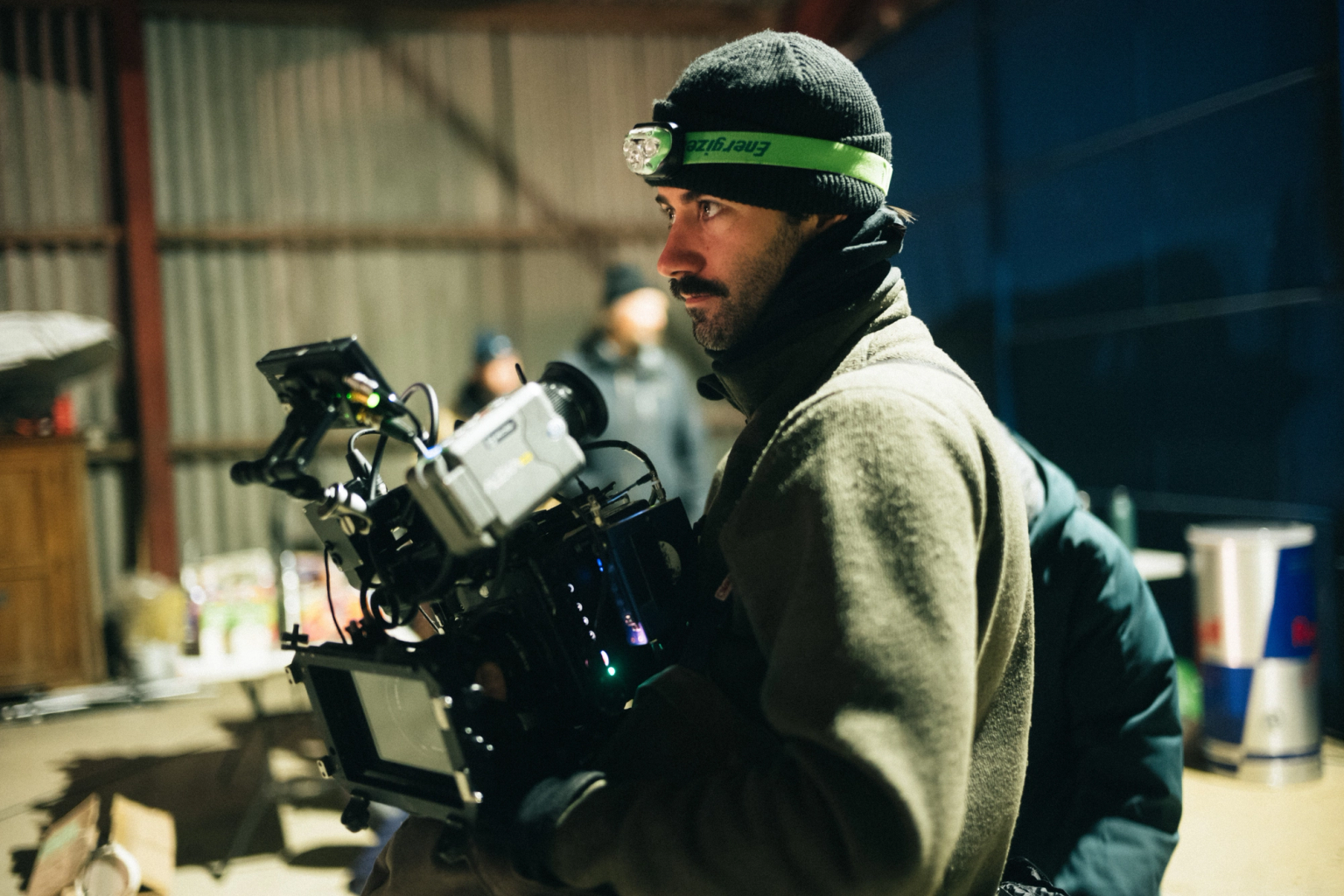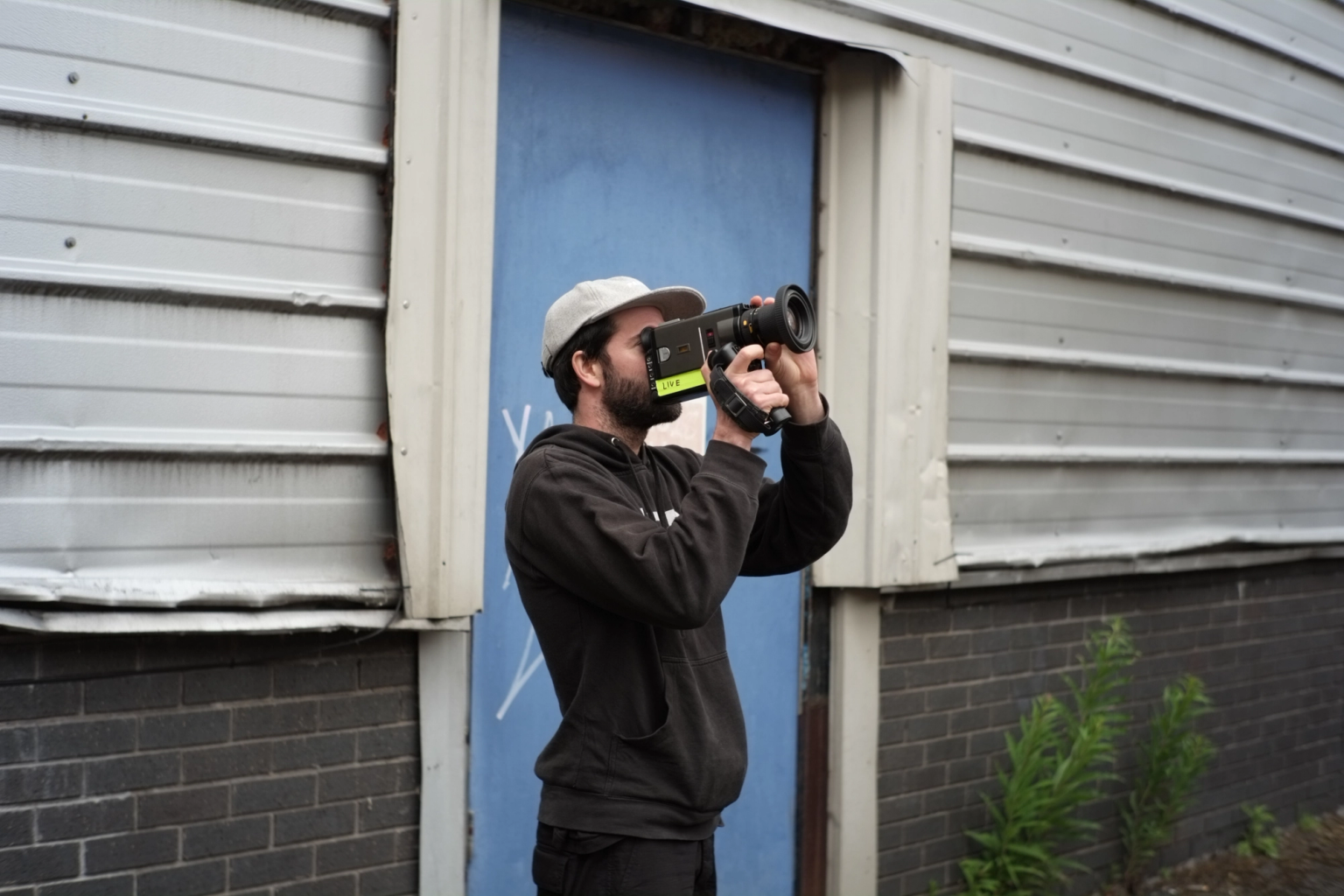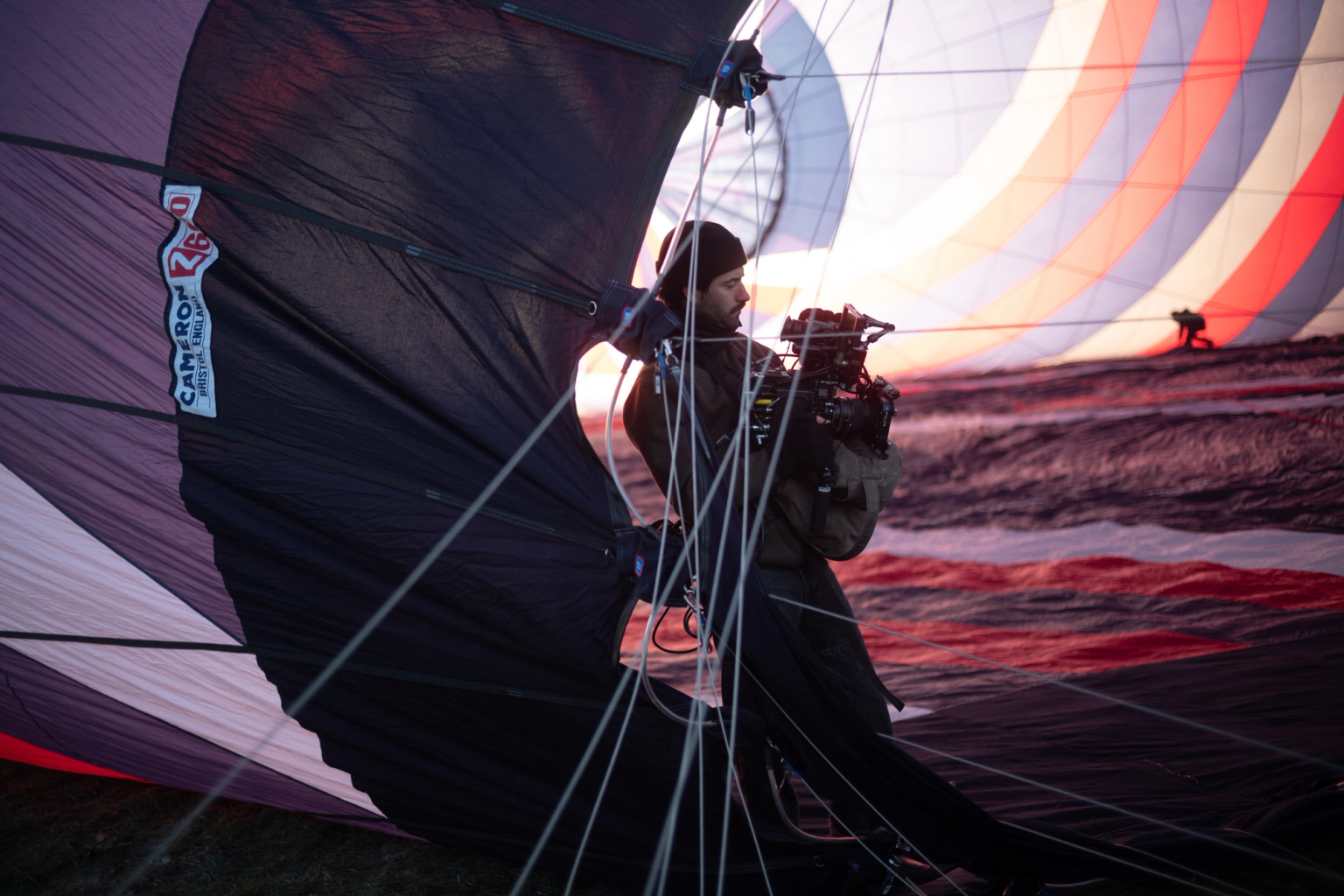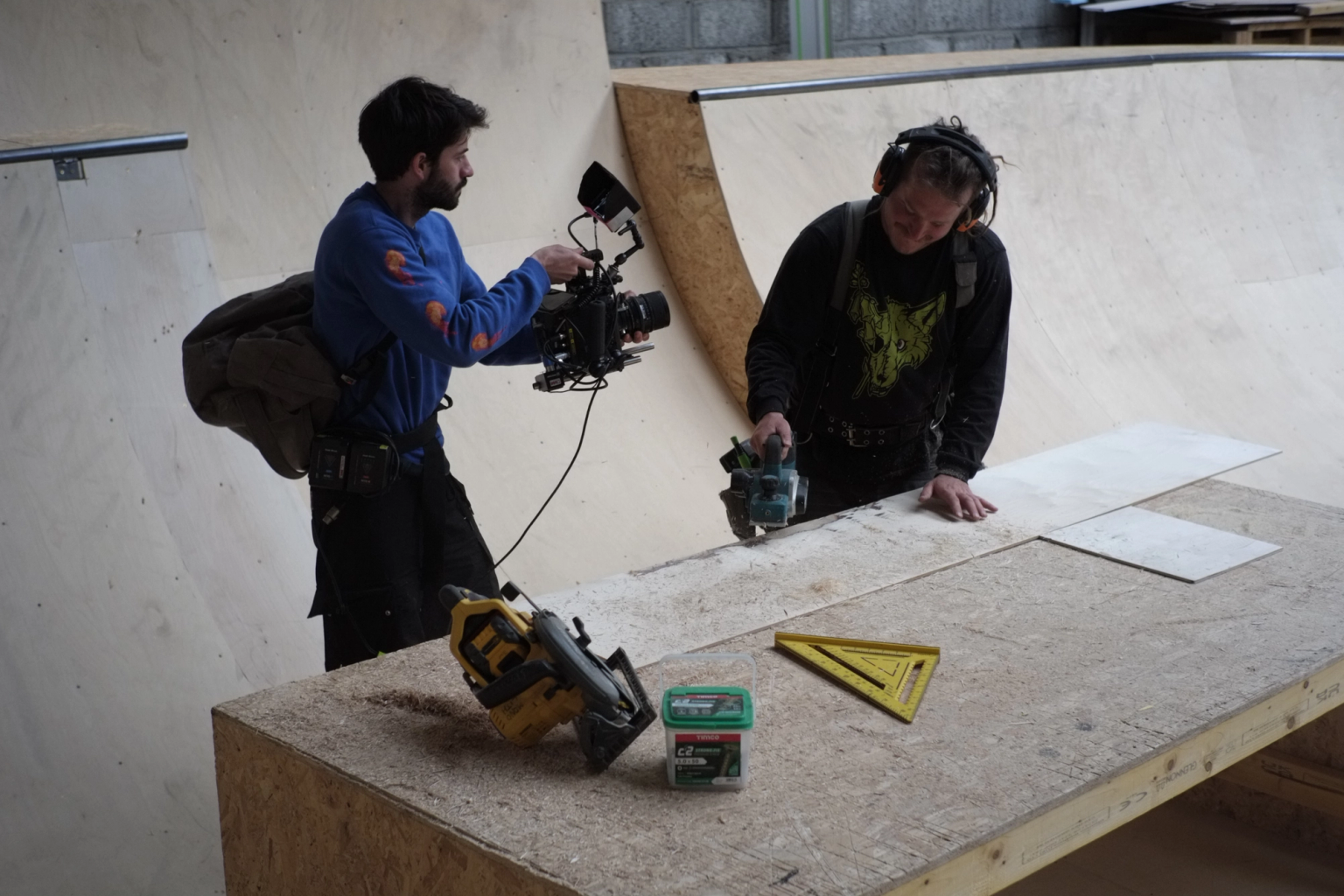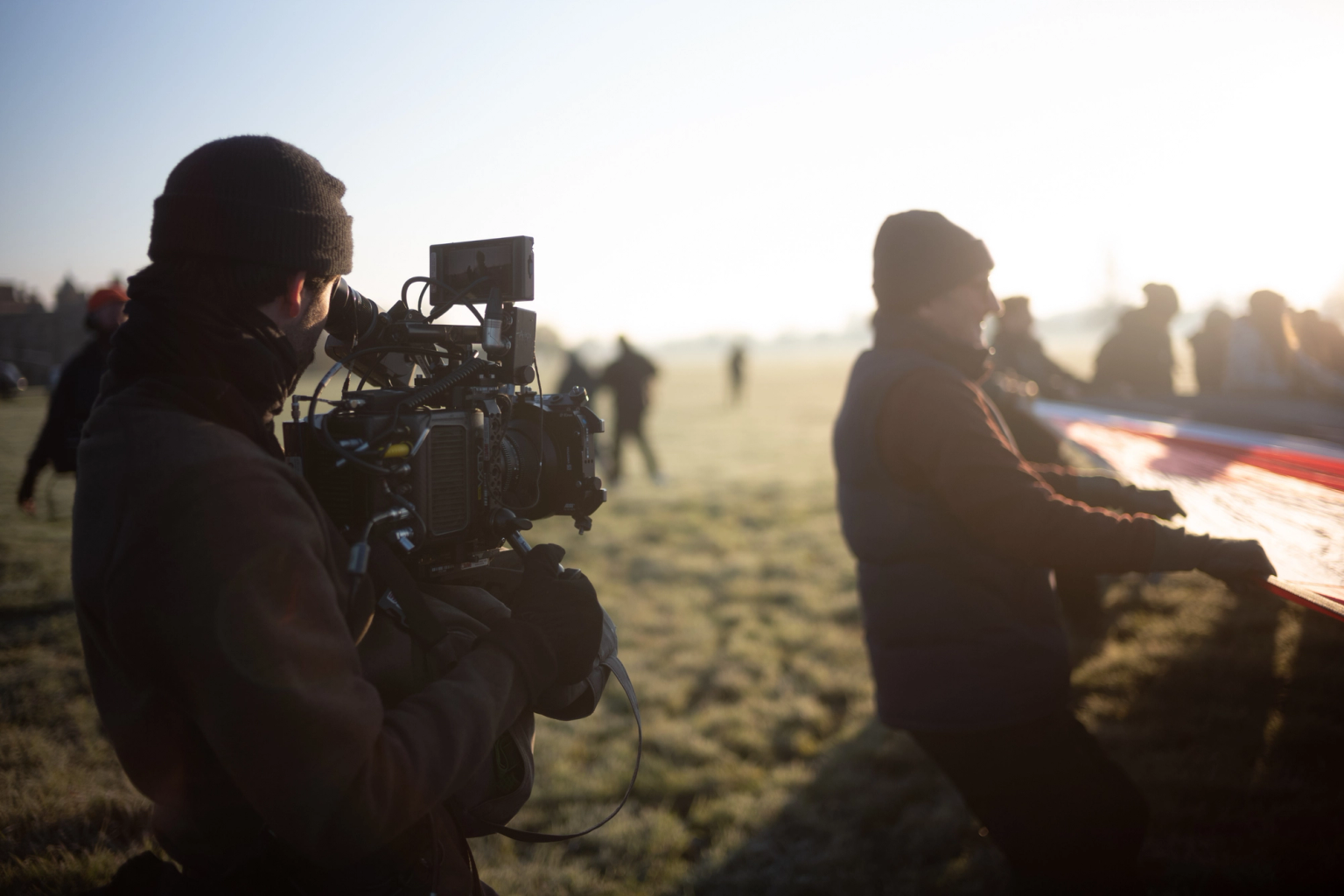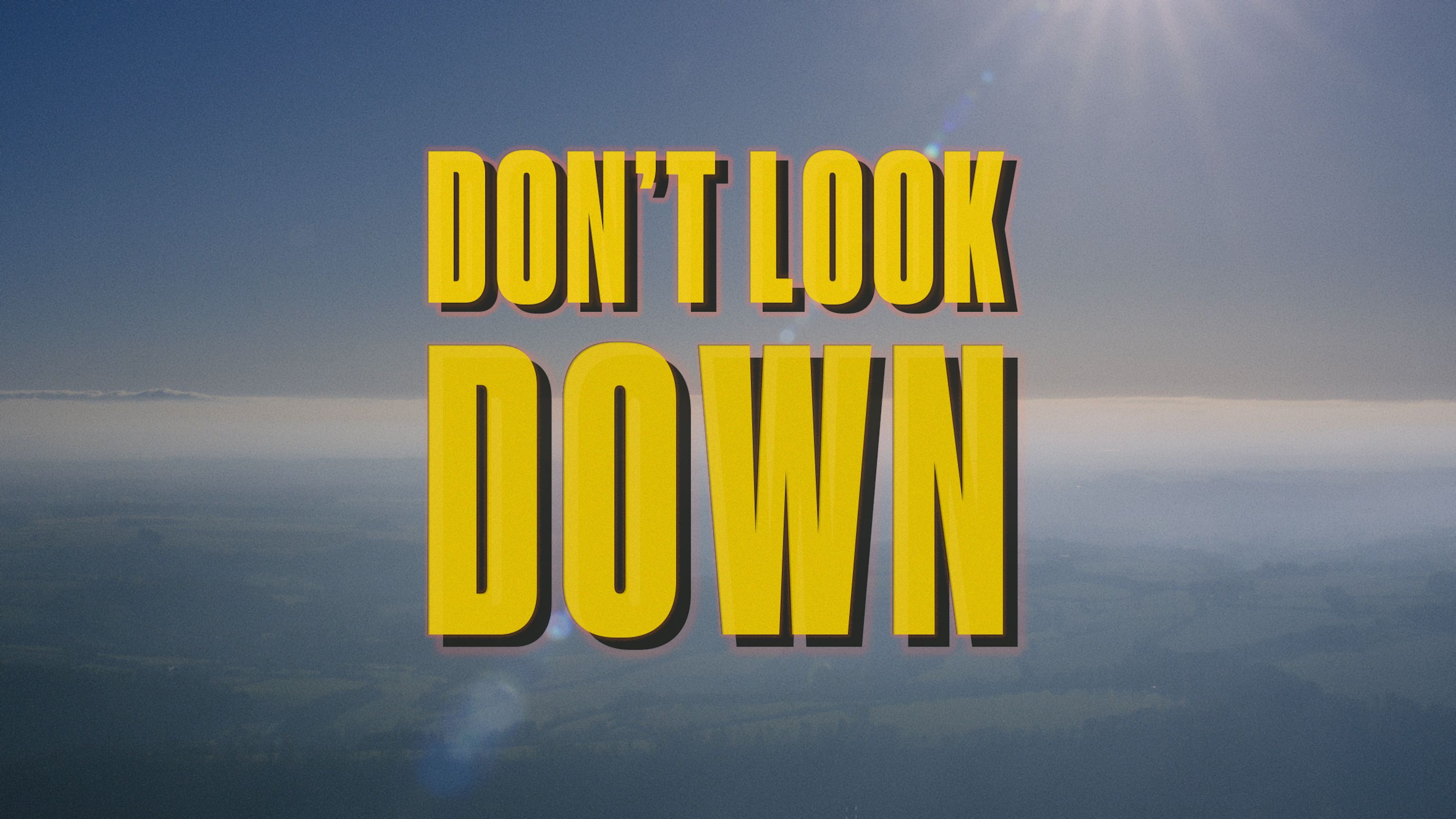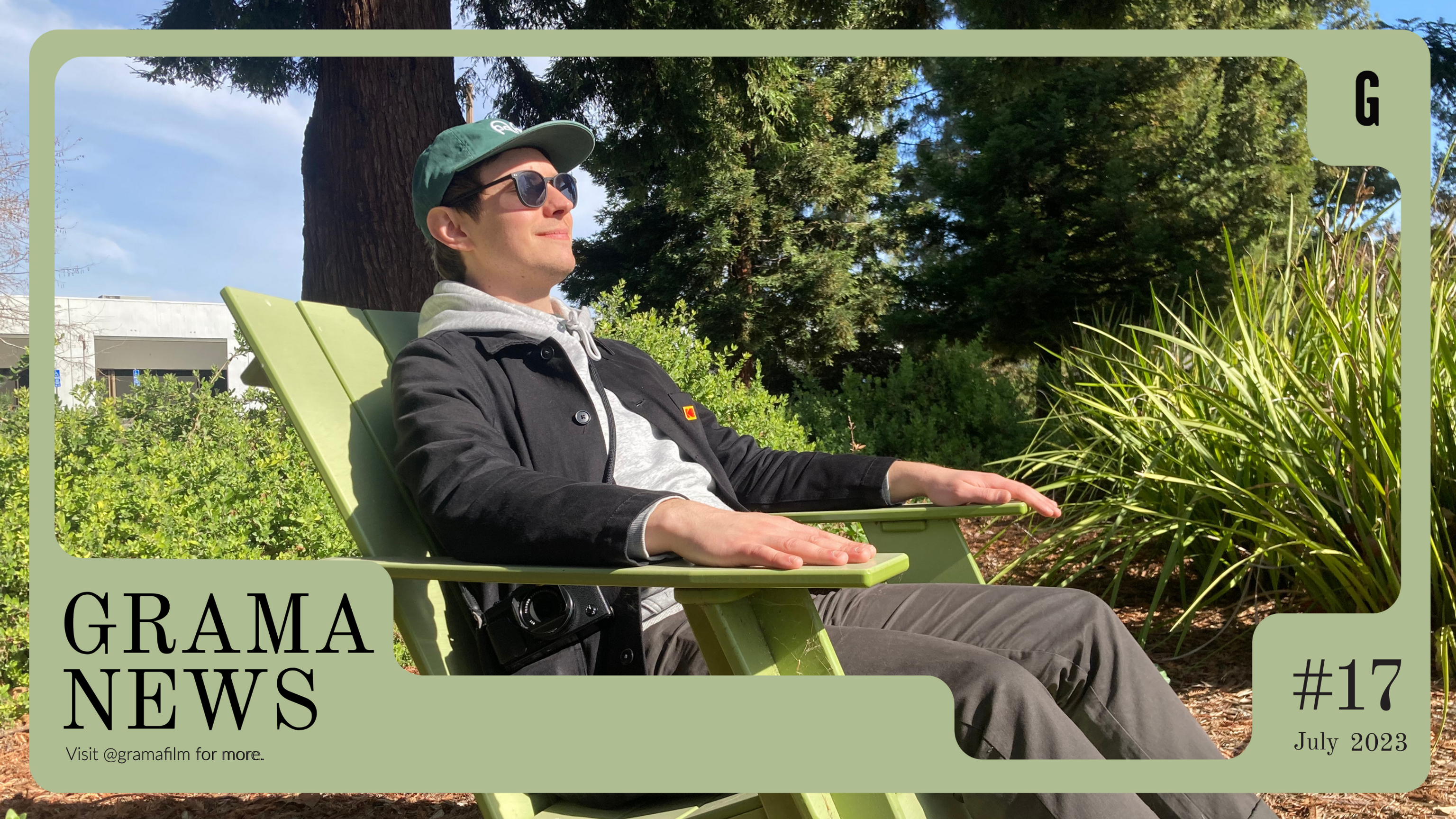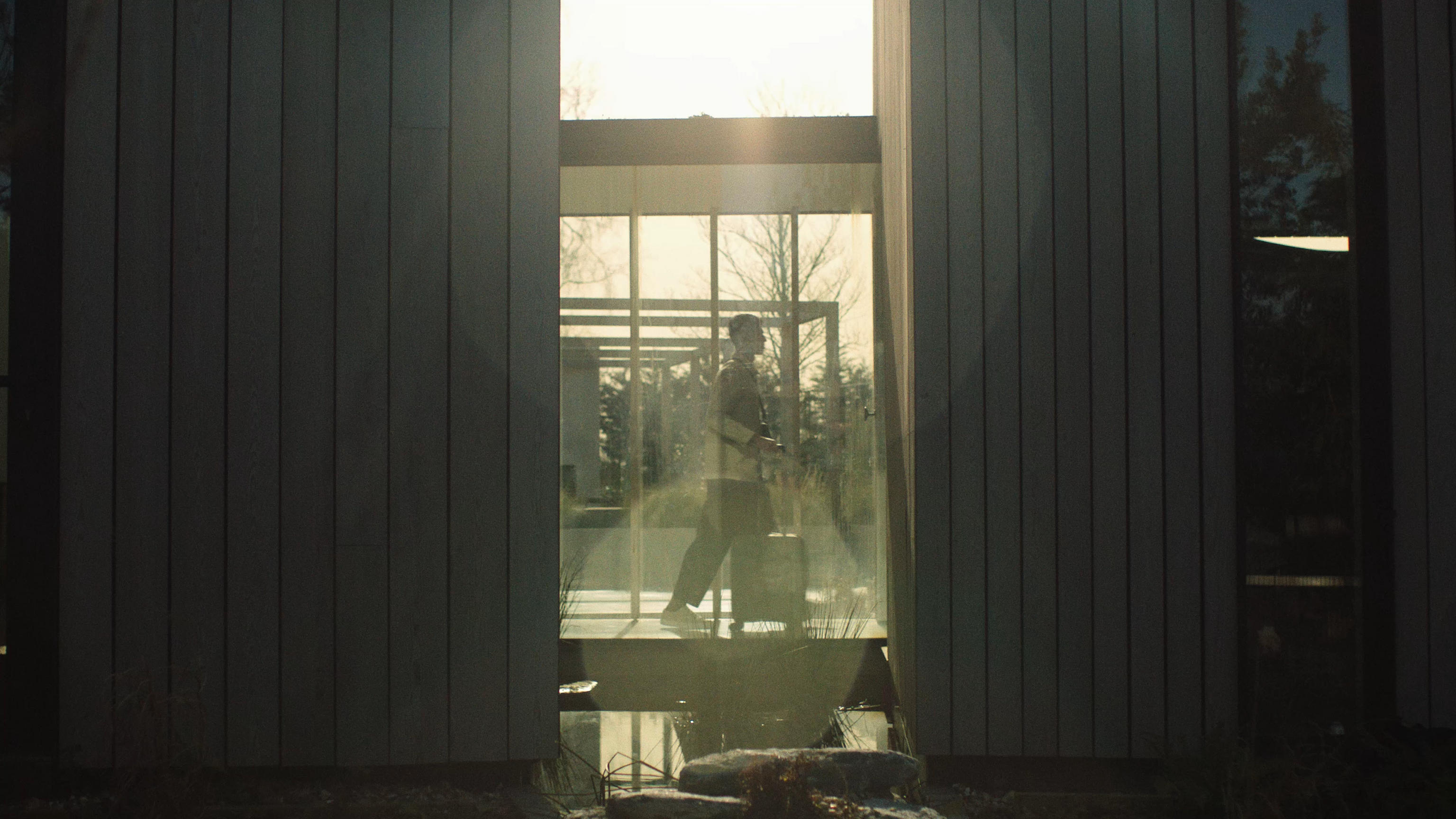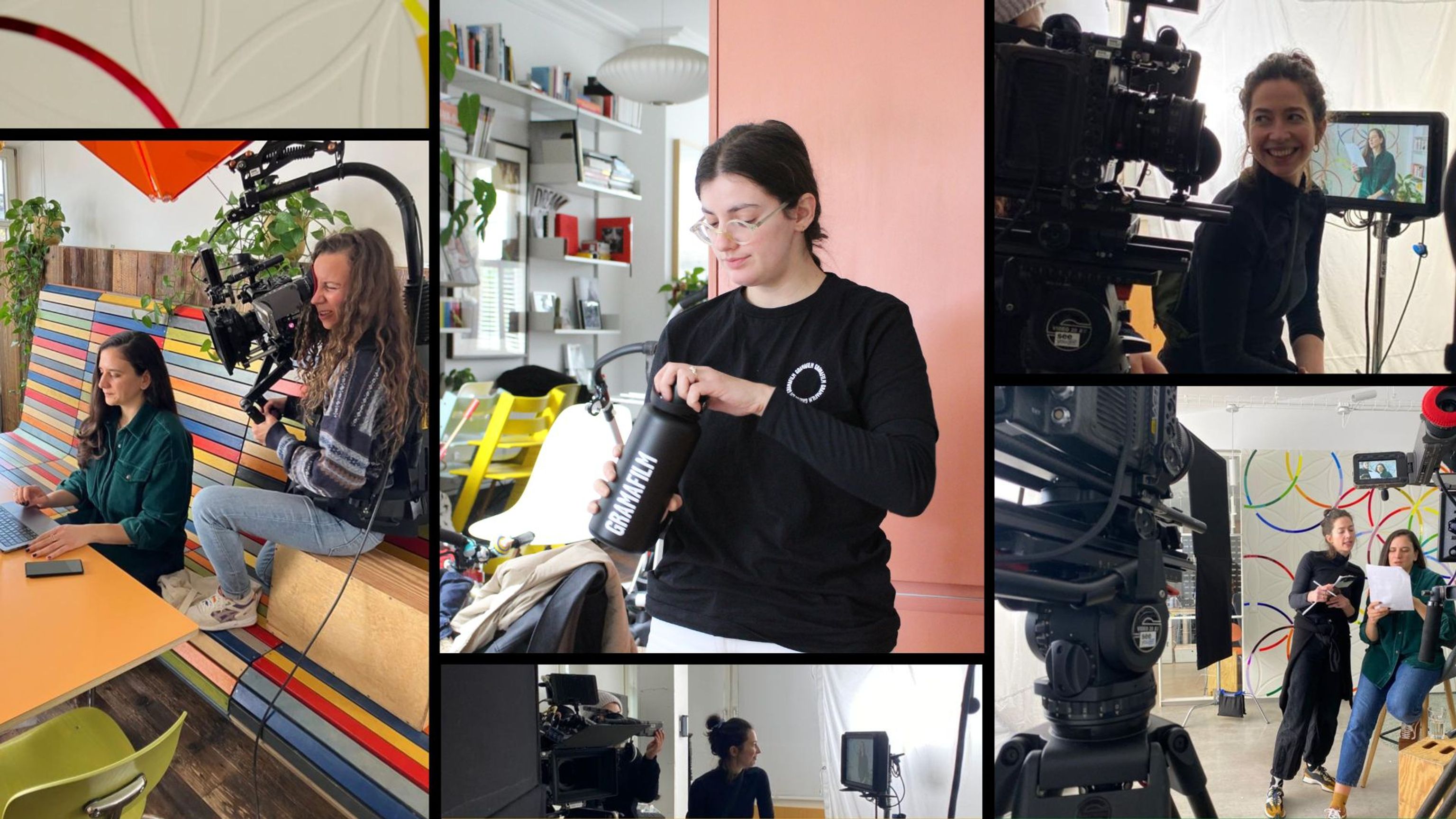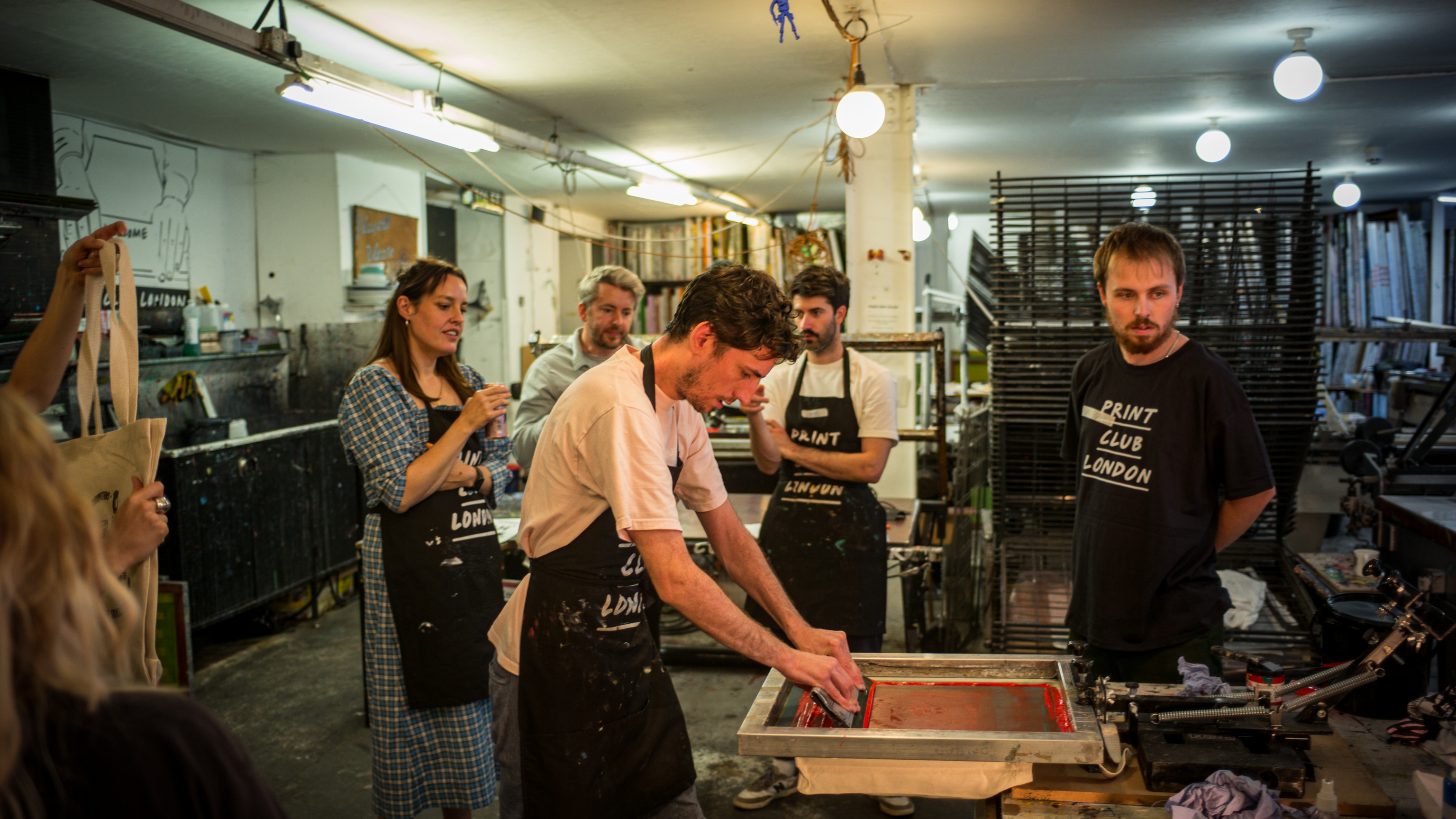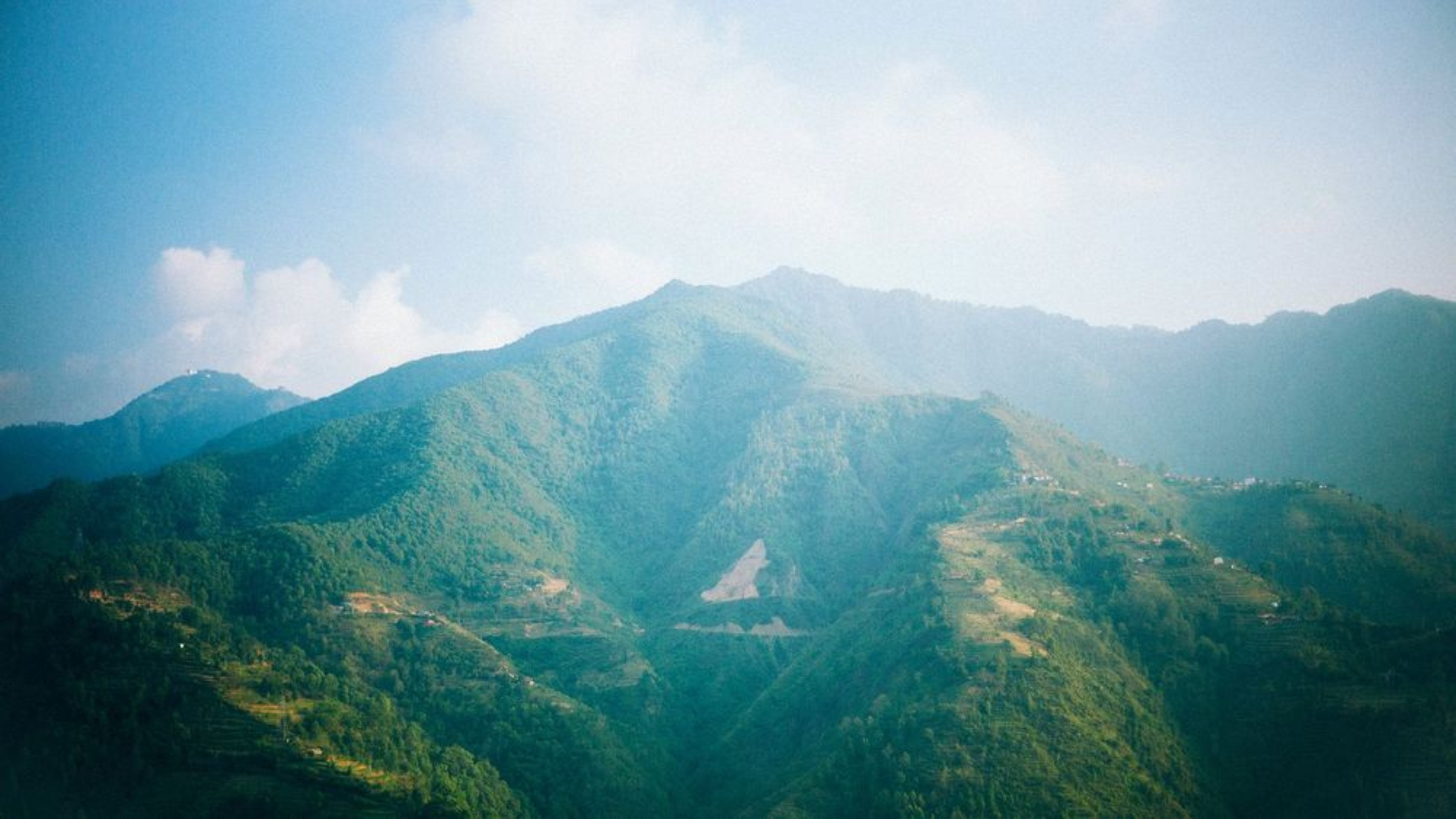We speak to director Tiago Kingwell about Don't Look Down, a three-year project following Kriss Kyle's quest to BMX 2000ft in the sky.
Share on
In 2021, Red Bull approached Gramafilm to help document Kriss Kyle’s latest dream project - riding a 2.5t BMX bowl 2,000ft in the air.
Having already helped document some of Red Bull’s most exhilarating stunts, from the gnarliest waves to the fastest F1 cars, and even two planes flying through a hangar, director Tiago Kingwell knew this project was going to be crazy.
But even for Red Bull, this project was different.
Shot over the course of three years, Don't Look Down captured the entire journey from inception to creation. With 55 crew on board, balloons, bowls, and a whole lot of BMXing, Tiago Kingwell had a lot to factor in. We chatted to him about how we approached it.
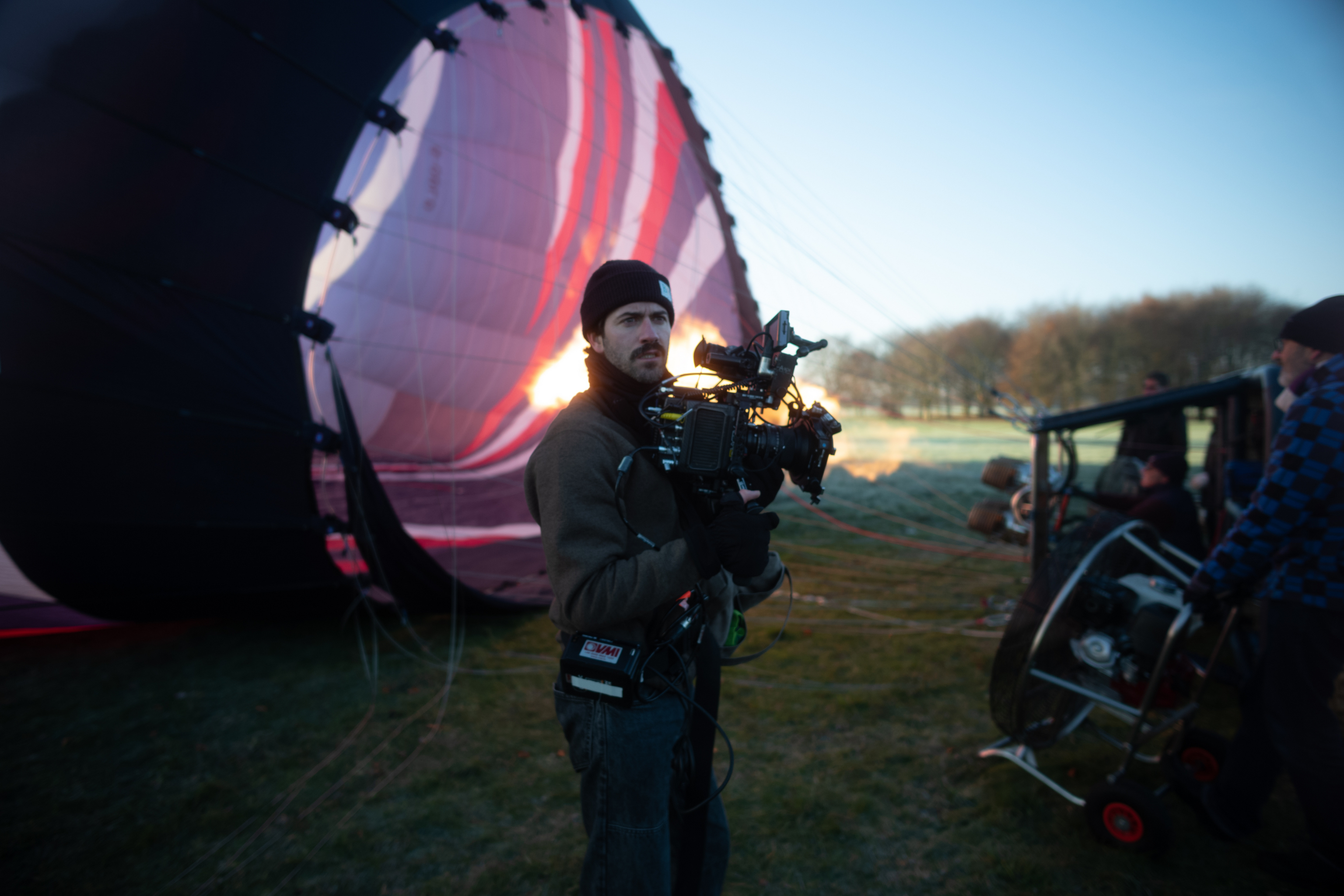
As a self-shooting Director, how did you approach the camera decision?
When filming any documentary you know you're going to have to record extended bits of action. But even by documentary standards, Don't Look Down required a constant 'eyes-on' approach. I knew I needed a solid camera which could provide cinematic quality, without weighing a tonne.
So of course, I had to reach for the Alexa Mini.
Why do you like the Alexa Mini?
Well firstly, the flexibility any digital data-processing camera gives you is a life-saver in documentary filmmaking. As I mentioned, we wanted to capture a "journey" - rich in beginning, middle and end content - so I needed to record pretty much the whole time.
The Alexa Mini was able to do this, whilst retaining a polished cinematic look & aesthetic to the film. The Alexa Mini has a way of processing images that I love. It’s like a frame-by-frame that looks like a picture which in my opinion, gives a film look that I was after instead of a digital look.
And besides… I needed something lightweight.
I was filming for 8-12 hours a day - 2hrs straight sometimes without putting the camera down - so in order not to destroy my body I needed something smaller, something I could hold in my hands. Or at the very least, could be rested on a cinesaddle bag.
What about this handheld approach appealed to you?
The handheld approach gives you a more human-like POV, which was definitely something I wanted stylistically. With 55 crew on board, experts in F1, BMX and ballooning - collaboration was a huge theme for this project and I felt my filming should reflect that. I wanted to transmit a sense of immersion - making the viewer feel like they're part of the crew, there collaborating with them.
I even used a 25mm & 18mm lens to give a wide - eyelike - view, which I coupled with Uncoated Zeiss Super Speeds glass to create natural eyelike light flares. The really fast aperture (1.3) of the Zeiss Super Speeds provided a nice depth of field that helped to separate the subjects against their backdrops!
The documentary saw a mix of both Digital (Alexa Mini) and Analogue (Super 8) film - Why?
The mixture of digital and analogue came from two main thoughts really. The first, contrast. I wanted something to contrast with the clean, modern look of the Alexa Mini. This would help with rhythm - something you can really see with the credits - which I had a clear vision of from early on.
As the documentary slowly dims to a calm, atmospheric end I wanted the credits to suddenly come back, hitting you with an intense style & music change - bringing you back to the importance of teamwork with an added sense of nostalgia.
As it happens, this teamwork element was the second reason I used Super-8.
I wanted something that gave a sense of camaraderie. A home video of sorts, that felt candid and in the moment. The Super-8 gives this nice, unfiltered and raw image which really brings humanity, friendship and collaboration to life.
Also, some of the crew themselves were unfiltered - authentic Scottish BMX'ers & riggers, Bristolian ballooners - the Super-8 reflected the very nature of those people, whilst the digital camera reflected - and was used more - with the technical, Red Bull Advanced Technologies professionals.
I wanted to transmit a sense of immersion - making the viewer feel like they're part of the crew, there collaborating with themTiago Kingwell – Director
Speaking of camaraderie, you worked with quite a few others on this including Ride Director, Matty Lambert. How did you find that?
Have to say, it was definitely an interesting angle including a ride film directed by someone else within our documentary. But as it turned out, it worked out really well. Matty Lambert is a real pro when it comes to shooting BMX videos and has worked with Kriss Kyle for years, so being able to collaborate with him (without interfering too much) was honestly a pleasure.
Part of our documentary captured Matty's side too, his concerns, his ambitions - which added a whole other element to the Behind the Scenes. Working together, we wanted the documentary to have a seamless transition to the ride-film so we made sure they both shared a similar feel. If you notice, there is no hard contrast between styles - they feel like one and proud to say we never had to cut to black when transitioning between the two.
The even has some of our BTS documentary in it - so you can see they worked well together!
Matty Lambert - Ride Director
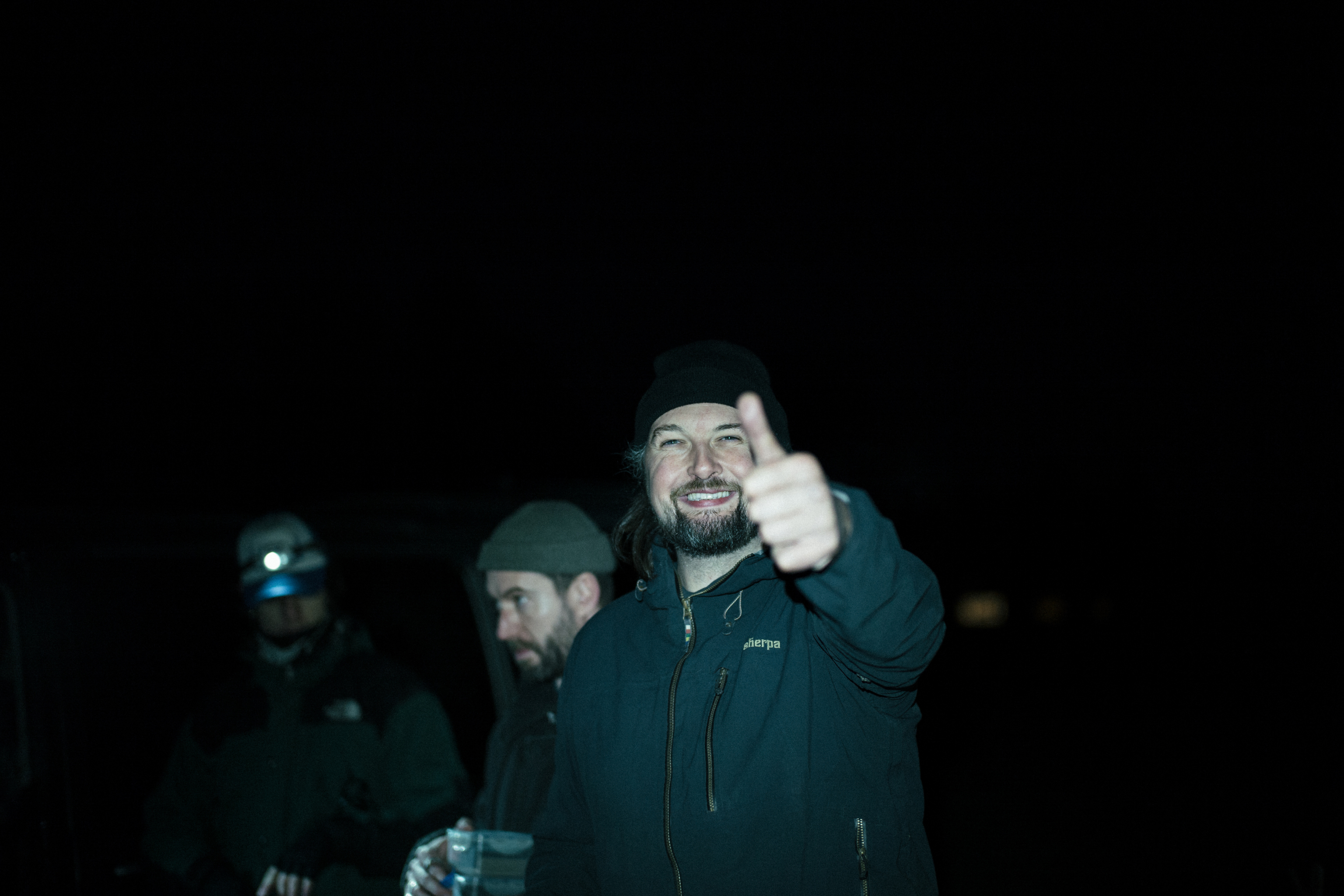
Alongside Matty I worked with Sound Composer, Louis Souyave from beginning to end which was really great. Bespoke adventures like Don't Look Down deserve bespoke Music and Louis helped create that journey element which worked so well. Editor, Ross Caswell, also helped me tremendously by having loads of conversations on how we should approach the edit with the material that we had. We had a lot…I really enjoyed working with him and we got the edit to a really nice place by the end.
Filming a documentary ultimately is all about collaboration, so collaborating with others just felt right. And I think that theme comes through in almost every element of the film.
What was the biggest surprise when it came to challenges?
For me, I think the biggest nut to crack was the length of the film. I mean, it wasn't too much of a surprise given we'd captured a huge amount of footage. But still, cutting it all down to create a strong, watchable narrative took the better part of two months.
Working with Ross Caswell really helped iron it out, allowing us to show the audience the stress, fun & relief of a three-year project all within one hour. Hopefully you agree!
Don't Look Down - Full Film
Tiago at work

